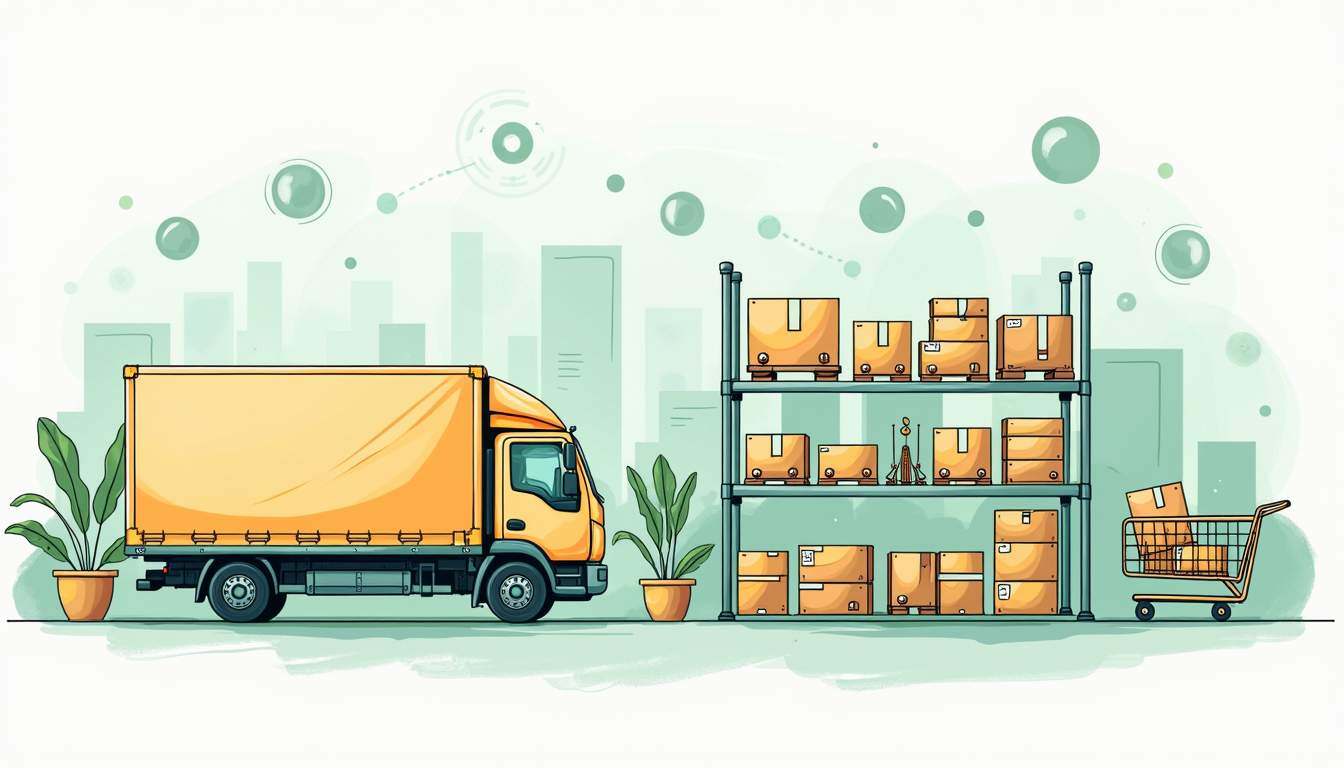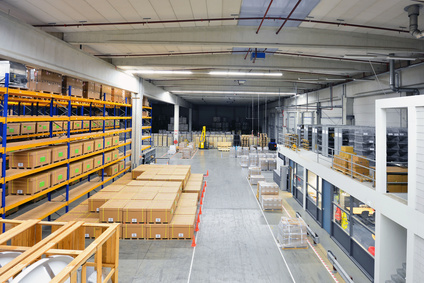Share this
Finding Your Fair Definition of “Fast Ecommerce Fulfillment Services”
by Shipfusion Team on Apr. 24, 2025

Two-day delivery has become a baseline expectation for consumers today. But what qualifies as fast depends entirely on your business model, product category, and customer base. A skincare brand shipping nationwide from two regional warehouses may define speed differently than a furniture retailer managing LTL freight. It’s time everyone learns to look beyond last-mile shipping and realize true timeliness hinges upon how your entire fulfillment infrastructure responds to demand.
This guide breaks down what goes into the making of fast fulfillment, how to evaluate whether it’s working for your brand, and what to look for in a fast ecommerce fulfillment services partner who can actually deliver on speed.
What “Fast Fulfillment” Really Means
Fast fulfillment begins way before shipping. It starts the moment an order is placed and ends when it reaches the customer’s doorstep. The entire chain includes:
-
Order Transmission – How quickly orders flow from your ecommerce platform to your warehouse system or 3PL
-
Inventory Availability – Whether items are in stock and stored in the right location
-
Pick/Pack Speed – How efficiently a fulfillment center processes the order
-
Carrier Handoff – When the order is labeled, scanned, and passed to the shipping carrier
-
Delivery Time – How long it takes the carrier to complete the last mile
If one part of that chain lags, your delivery promise is broken. That’s why working with a fulfillment provider who controls the full process – from inventory sync to shipping handoff – is critical.
Why Fulfillment Speed Impacts More Than Just Delivery Time
Fast fulfillment isn’t just a customer experience upgrade – it’s a business lever that influences multiple performance metrics:
Cart Conversion Rates
Offering 2-day shipping increases conversion, especially for first-time customers. Delay the delivery promise, and you increase bounce and cart abandonment.
Customer Lifetime Value
Fast, consistent delivery builds trust. Customers who receive accurate orders quickly are more likely to return and less likely to contact support.
Operational Efficiency
Fulfillment providers who invest in speed often use automation, better routing logic, and error-reduction systems. That means fewer reships, fewer customer service tickets, and better margins.
Marketing ROI
You spend to acquire the click – but if fulfillment lags, you lose the sale. Reliable, fast fulfillment makes your ad spend go further by reducing friction in the purchase path.
What Powers a Fast Ecommerce Fulfillment Operation
Speed in complicated domains like logistics comes from designing systems that reduce delay at every step. Here’s what to look for in your own operation or in a 3PL partner:
1. Distributed Inventory Network
Warehouses in multiple regions allow orders to be fulfilled from the closest location, reducing shipping zones and transit time. Providers like Shipfusion use strategically located facilities across North America to enable 2-day ground shipping to the majority of the U.S. and Canada without relying on costly air services.
2. Real-Time Inventory and Order Sync
Speed starts with system sync. Your sales channels should connect directly to your fulfillment platform so that orders drop instantly and inventory is always up-to-date. Delays in syncing or inventory discrepancies lead to backorders and missed shipping windows.
Shipfusion’s proprietary software is built for this kind of visibility so orders aren’t just received fast, they’re acted on without lag.
3. Same-Day Order Cutoffs
A fulfillment partner should clearly define when orders must be placed to ship same-day. For most DTC brands, that means accepting orders until early afternoon (e.g., 2 p.m. local warehouse time). Miss the cutoff and you're adding a full day to delivery.
Ask your provider: What percentage of orders ship same-day? Top-tier partners should target 99%+ fulfillment on time.
4. Efficient Pick/Pack Workflows
Warehouse labor efficiency has a direct impact on fulfillment speed. Look for fulfillment centers that use zone picking, batch workflows, and barcode verification to reduce time per order and minimize errors.
Providers like Shipfusion combine physical process efficiency with software checks to maintain both speed and order accuracy.
5. Strong Carrier Relationships
Fast fulfillment requires more than internal speed. Your provider needs reliable outbound shipping options and ideally, carrier diversity. Whether that’s USPS, UPS, FedEx, or regionals, your partner should route based on cost and performance data, not just default contracts.
How to Benchmark Your Own Fulfillment Speed
Before switching providers or promising 2-day shipping, you need to know where you currently stand. Fast is relative and performance needs to be benchmarked against your own operational data.
Start with:
-
Order-to-Ship Time: How long does it take from order placement to label generation? Break this down by warehouse and time of day.
-
Shipping Time by Zone: What are your actual delivery times across key shipping zones? Use carrier tracking data to identify inconsistencies.
-
Order Accuracy: Are faster orders coming at the cost of increased errors or reships?
-
Fulfillment SLA Compliance: What percentage of your orders ship within the promised window?
Tools like Shipfusion’s fulfillment dashboard allow brands to monitor all of these metrics in real time, without needing third-party plugins or separate reporting tools. That kind of visibility makes it easier to identify whether the bottleneck is in the system or in the supply chain.
When Faster Isn’t the Right Priority
Speed is important, but not at the expense of cost, accuracy, or customer alignment. In some cases, your business may benefit more from predictable shipping than aggressive 2-day promises.
Consider:
-
Low-margin products: If shipping eats up 25%+ of your AOV, offering expedited options may be unsustainable unless you're charging extra.
-
High-SKU complexity: Custom bundles or personalized orders often need more time to fulfill. Promising same-day shipping may lead to errors or returns.
-
International orders: If you ship globally, managing customs and cross-border delivery speed is often outside your fulfillment provider’s control.
-
Eco-conscious customers: Many shoppers are open to slower shipping if it’s more sustainable. Offering a slower, consolidated shipping option can reduce emissions and costs.
In these cases, the focus should shift from fast to transparent. Clear delivery estimates, tracking updates, and fulfillment consistency matter more than absolute speed.
How to Choose a Fast Ecommerce Fulfillment Services Provider
Not every 3PL that promises “2-day shipping” can consistently deliver it. Here’s how to evaluate whether a partner is truly built for speed:
Scalability with Stability
Look for a provider that doesn’t slow down when volume spikes. Can they handle peak season without missing SLAs? Can they onboard new SKUs and product lines quickly? Shipfusion, for example, scales up without performance drops thanks to its warehouse footprint and flexible tech infrastructure.
Integration Depth
Fast fulfillment relies on clean data. Choose a provider that offers direct integrations with your ecommerce platform, inventory system, and marketplaces. Bonus points if they offer proprietary software – they’ll have more control and fewer sync issues.
Performance Visibility
You should have real-time access to fulfillment KPIs like on-time shipment rate, order accuracy, and inventory velocity. Don’t settle for generic dashboards. Demand actionable insights.
Geographic Footprint
Ask for a breakdown of how many customers your provider can reach with 2-day ground shipping. Providers with warehouses near key population centers will outperform single-location fulfillment on both cost and delivery speed.
Shipfusion Redefines Fast Ecommerce Fulfillment Services
Prioritizing fulfillment efficiency is the fastest path to enhanced customer satisfaction, increase sales, and improved business outcomes. As you evaluate potential fulfillment partners, keep scalability, technology integration, and geographic coverage in mind to find the best fit for your business.
With Shipfusion as a 3PL, you'll get a partner dedicated to the success of your ecommerce business from the very beginning. Our comprehensive, stress-free fulfillment solutions are tailored to meet the demands of growing ecommerce operations. Experience the ease of seamless order processing, shipping, and returns, backed by our expert inventory management and cutting-edge real-time technology.
Get pricing today and take the first step towards a thriving ecommerce business with us.
Share this
You May Also Like
These Related Articles

Order Fulfillment Services Can Enhance Customer Loyalty

Behind-The-Scenes Tour Of Order Fulfillment Services

Understanding Fulfillment SLA Standards for Ecommerce Success
- April 2025 (22)
- March 2025 (26)
- February 2025 (26)
- January 2025 (37)
- December 2024 (16)
- November 2024 (23)
- October 2024 (22)
- September 2024 (27)
- August 2024 (9)
- July 2024 (8)
- June 2024 (5)
- May 2024 (8)
- April 2024 (8)
- March 2024 (6)
- February 2024 (6)
- January 2024 (5)
- December 2023 (3)
- November 2023 (3)
- October 2023 (5)
- September 2023 (4)
- August 2023 (2)
- July 2023 (1)
- June 2023 (4)
- March 2023 (2)
- October 2022 (1)
- September 2022 (5)
- August 2022 (4)
- July 2022 (7)
- June 2022 (4)
- May 2022 (4)
- April 2022 (6)
- March 2022 (2)
- February 2022 (1)
- January 2022 (3)
- December 2021 (2)
- November 2021 (4)
- October 2021 (2)
- September 2021 (5)
- August 2021 (4)
- July 2021 (4)
- June 2021 (3)
- May 2021 (2)
- April 2021 (3)
- March 2021 (3)
- February 2021 (3)
- January 2021 (2)
- December 2020 (4)
- November 2020 (2)
- October 2020 (4)
- September 2020 (2)
- July 2020 (5)
- June 2020 (4)
- May 2020 (2)
- April 2020 (2)
- March 2020 (4)
- February 2020 (1)
- December 2019 (1)
- May 2018 (1)
- March 2018 (2)
- February 2018 (3)
- January 2018 (3)
- November 2017 (3)
- July 2017 (4)
- March 2017 (3)
- February 2017 (5)
- January 2017 (3)
- December 2016 (4)
- November 2016 (6)
- October 2016 (6)
- October 2015 (1)
- September 2015 (1)
- June 2015 (3)
- May 2015 (3)
- August 2014 (1)
- July 2014 (1)
- March 2014 (1)
- February 2014 (1)